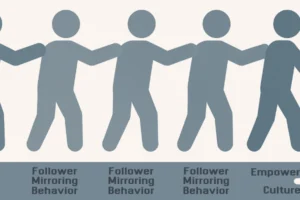Leaders Are Not Managers
Despite decades of research and countless books and articles written on the differences between management and leadership, confusion persists between these two critical roles in organizations. I’ll be blunt. Leaders are not managers. Or better said, Leadership is not management. This confusion is a critical issue, as it can lead to misunderstandings, misaligned expectations, and ineffective decision-making at all levels of the organization. Today, we’ll explore why management and leadership are still confused and what organizations can do to overcome this confusion and maximize the impact of these roles.
Lack of Definition and Clarity
One of the main reasons why management and leadership are still confused is a lack of definition and clarity. Many definitions of these terms are overly simplistic, ambiguous, or incomplete, making it difficult for individuals and organizations to understand their differences and similarities. This lack of definition and clarity can lead to confusion and misperceptions, making it challenging for organizations to determine which role best suits a particular situation or individual. Moreover, those who are unaware repeatedly use these terms interchangeably. Ultimately, the individual and the organization suffer the result.
Blurring of the Lines
Another factor contributing to the confusion between management and leadership is the blurring of the lines between these two roles. As organizations evolve and change, the roles of managers and leaders may evolve and change as well, making it difficult to determine the exact responsibilities and duties of each role. As a result, many leadership roles are labeled management and vice versa. This blurring of the lines can further contribute to confusion and make it challenging for organizations to align the roles and responsibilities of managers and leaders with their strategic goals and objectives.
Misperceptions about the Roles
Another reason why management and leadership are still confused is the prevalence of misperceptions about these two roles. Many individuals and organizations wrongfully view management as solely focused on controlling and directing work processes, while they view leadership as more focused on inspiring and motivating others. While these are important aspects of each role, they are not the only ones and do not capture the full scope of these critical roles. This narrow (and entirely oversimplified) view of management and leadership can lead to misunderstandings and misaligned expectations, making it difficult for organizations (or individuals) to achieve their goals.
A few Similar Skills and Traits
Another factor contributing to the confusion between management and leadership is the slight overlap in skills and traits required for each role. Managers and leaders must communicate effectively, think strategically, and build strong relationships with others. This overlap in skills and traits can make it difficult for some individuals and organizations to determine the differences between the two roles and can contribute to the confusion between management and leadership.
Latching on for Relevance
Finally, and arguably the biggest offender, another reason for the confusion between management and leadership is that many individuals in management positions are latching on to the leadership title for various reasons. Some do it to boost their own careers and professional image, while others believe it makes them appear more innovative and forward-thinking. Similarly, despite management being its own important science, as leadership becomes more popular, some in management may feel forced to latch on to leadership terms in their attempt to remain relevant.
However, this mislabelling can lead to a misunderstanding of the actual role and responsibilities of leadership and can also dilute the value and impact of both management and leadership within organizations. It’s vital to differentiate between management and leadership, as they have distinct organizational functions and responsibilities and should not be conflated or used interchangeably. The key takeaway is that leadership and management are different sciences. Moreover, leaders and managers serve different purposes. Organizations should strive to clearly understand and cultivate both functions for optimal success.
The confusion between management and leadership is a critical issue that organizations must address to ensure they effectively utilize and maximize these two important roles. By clarifying the definitions of these roles, aligning the responsibilities and duties of managers and leaders, addressing misperceptions, and blurring the lines between them, organizations can improve their outcomes and maximize the impact of these critical roles. By doing so, organizations can ensure they have the right individuals in the right roles, with the right skills and traits, to achieve their goals and drive success.
Want more? Be sure to read Dr. John Kotter’s article Management Is (Still) Not Leadership.
You might also like my article Time Management? How About Time Leadership?




